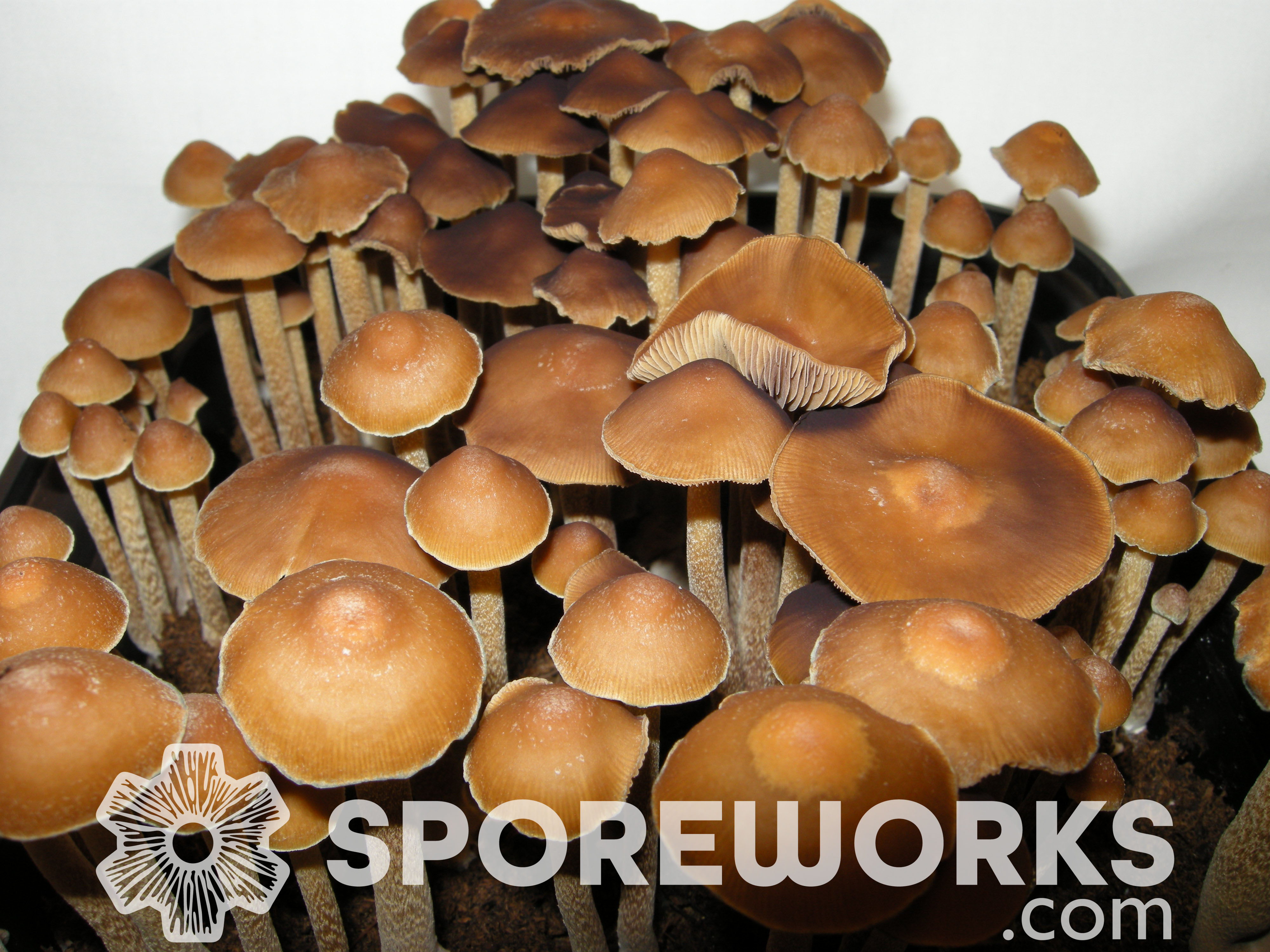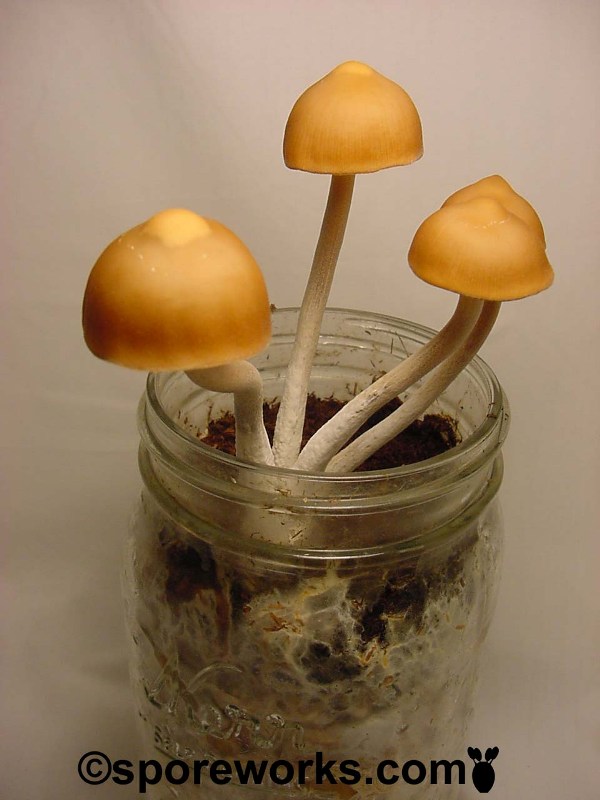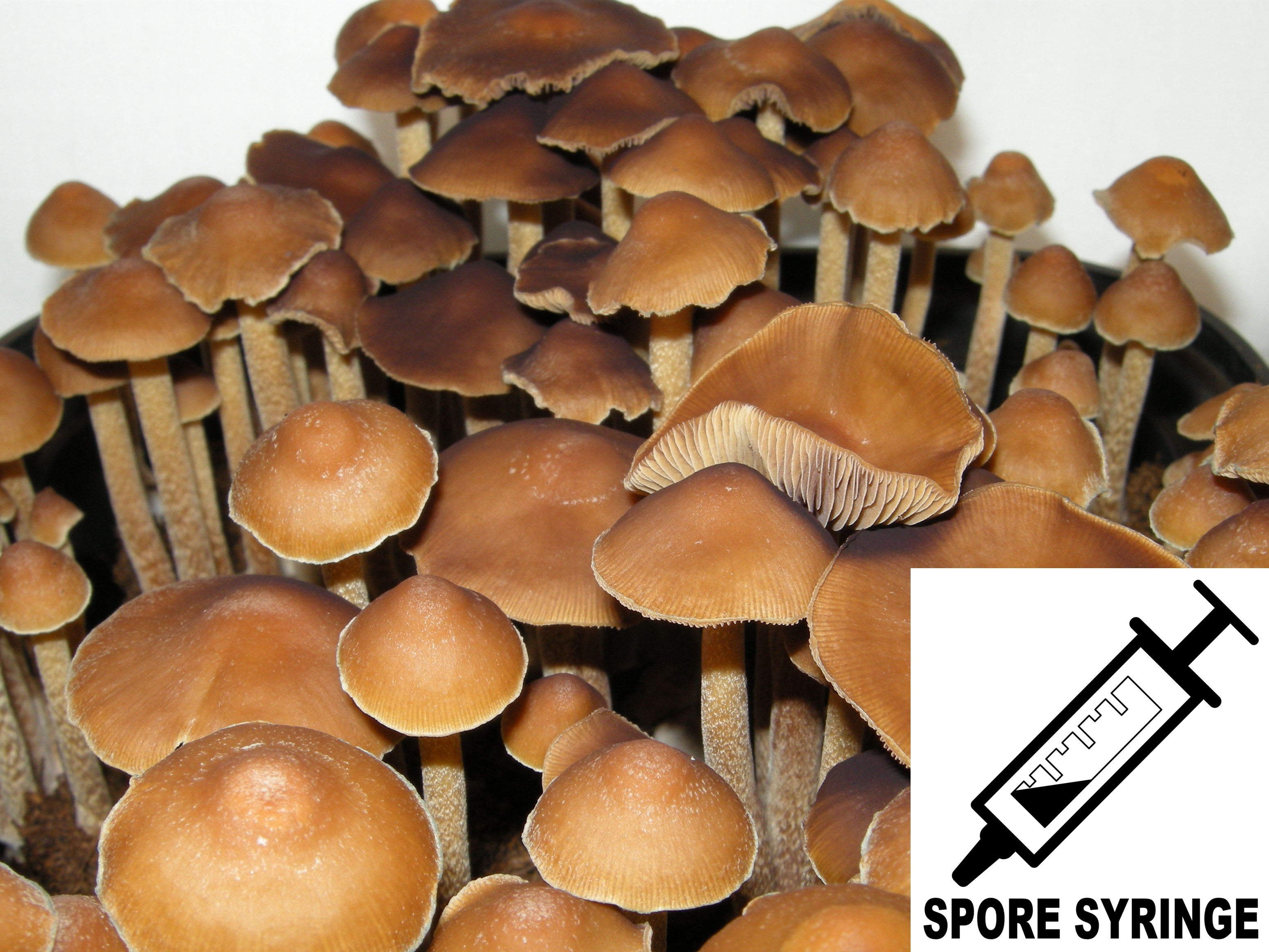Psilocybe subtropicalis (P. semperviva) Spore Syringe
Description
|
Spores provided in sterile aqueous solution using 10cc BD Luer-Lok syringes. One 1.5in 16ga needle will be provided for each spore filled syringe. Combo Savings! Purchase with your choice of other available Exotic Psilocybin Species strains in our Exotic Psilocybes : Customer's Choice 4 Pack
Habitat: Muddy soils and humus in subtropical forests Strain Origin: Mexico Cap: 10-30 mm in diameter, orangish brown to yellowish, convex but occasionally with a rudimentary papilla or umbo. Cultivated specimens sometimes exhibit an irregular edge. Stem: 50-110 mm long, fibrous and tough especially at the base, staining blue when cut. Gills: pale brown to yellowish brown to dark purplish black with spore maturity. Spores: 6.5?8 microns in length, rhomboid to subrhomboid in face view, dark purplish brown in deposit. Comments: This collection is a direct descendant of cultures made by Heim and Cailleux in 1958 and featured in the historically significant "Les Champignons Hallucinogenes des Mexique" (Heim & Wasson, 1958). Initially described as Psilocybe semperviva, it was considered an interesting but mutated form of P. mexicana (Heim & Wasson, 1958; and Heim and Cailleux 1958). However, unlike P. mexicana this species does not form sclerotia in culture. Later, Heim (1967) curiously described P. semperviva as being a wild mushroom from Huautla de Jimenez. It has been noted as slow growing and highly resistant to contamination and decay, which explains the descriptive name “semperviva" which means ever-living. This is especially appropriate considering that this sample was originally collected over 50 years ago and is still going stong. Guzman (1978) eventually determined that P. semperviva was actually a nonpapillate variant of P. hoogshagenii and was then known as P. hoogshagenii var. convexa. It remained under that moniker until genetic testing recently revealed the species to be conspecific with Psilocybe subtropicalis, only distantly related to P. hoogshagenii. Psilocybe subtropicalis is the older name, so that is where it stands. Selected References: Guzm?n, G. 1978. Further investigations of the mexican hallucinogenic mushrooms with descriptions of new taxa and critical observations on additional taxa. Nova Hedwigia 29: 625-644. Guzm?n, G. 1983. The Genus Psilocybe. Valduz, Germany: J. Cramer. Guzm?n, G. 1995. Suppliment to the monograph of the Genus Psilocybe. In Taxonomic Monographs of the Agaricales. Eds. O. Petrini and E. Horak. Bibliotheca Mycologica 159: 91-141. Heim, R., 1967. Breves diagnoses latinae novitatum genericarum specificarumque nuper descriptarum. Rev. Myc. 32: 203-210. Heim, R. and R.G. Wasson, 1958. Les champignons hallucinogenes des Mexique. Ed. Mus. Nat. d?Hist. Nat., Paris. Heim, R. and R. Cailleux, 1958. Latina diagnosis Psilocybe semperviva Heim et Cailleux, speciei mutantis hallucinogenae mexicanae per culturam obtentae. Rev. Myc. 23: 352-353 Stamets, P., 1996. Psilocybin Mushrooms of the World. Berkeley, Calif.: Ten Speed Press.
Links to historical off-site images: http://archives.mycotopia.net/discus/messages/5/26742.jpg http://archives.mycotopia.net/discus/messages/5/26746.jpg * Spores intended for microscopy and taxonomy purposes only. Images provided for informational and educational reference only and originate from cultivators and labs outside the US. Cultivation of this species is illegal in many countries including the United States. Please check your local regulations. California, Idaho, and Georgia residents: Orders requesting Psilocybe Genera Spores shipped to California, Idaho, and Georgia will be refused, voided, or refunded. Possession of these mushroom spores may be illegal in CA, ID, and GA without the proper permissions. |

Psilocybe subtropicalis (P. semperviva)

Psilocybe subtropicalis (P. semperviva)


